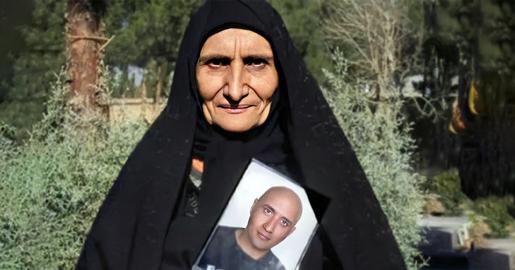The painting only suggests what she might have looked like but, since around 1906, each and every Iranian girl has owed Bibi Khanoom Astarabadi a debt of gratitude for her selfless efforts to establish, against all odds, the first girls’ school.
In 1895, a pamphlet titled Gentlemen’s Imperfections was making rounds among literate Iranian women. The writer, identified as “Bibi Khanoom” (literally “Lady Dame”), was the daughter of Mohammad Bagher Khan Astarabadi, a military commander in Astarabad, today’s Gorgan, an area on the Caspian Sea littoral. Her mother, Khadijeh Khanoom, daughter of a prominent clergyman, was a companion to Shokouh al-Saltaneh, one of the favorite wives of Qajar king Nasser al-Din Shah and the mother of crown prince Mozaffar ad-Din. She was a literate woman and was in charge of tutoring the many children of the king inside the royal harem. The exact date of her birth is unknown but, according to her children, she was born in 1858 or 1859.
After her parents divorced, she lived with her father until she was 22 and married Musa Khan Vaziri, a high-ranked official in the Persian Cossack Brigade, a Cossack-style cavalry unit that was led by Russian officers. They had seven children, most of whom grew up and made a name for themselves in Iranian arts and culture. One of the most prominent ones was Colonel Ali-Naqi Vaziri, a famous composer and the founder of the Academy of Music of Iran and the National Orchestra.
But the marriage did not last because of her husband’s “infidelity,” as Bibi Khanoom wrote at the end of Gentlemen’s Imperfections.
“The Disciplining of Women”
In Gentlemen’s Imperfections, Bibi Khanoom described her text as a rebuttal to another pamphlet called The Disciplining of Women, which had been authored by an anonymous author, most likely a Qajar prince. This pamphlet, which was popular among men, used satire to belittle women from an extreme male chauvinistic and patriarchal point of view.
By attributing unseemly characteristics to women, the author wrote things like: “A woman is a being who, similar to a child, must be educated by a man,” “Salvation of woman is conditional upon her absolute obedience to her husband,” “Woman must never ask a favor from her husband; it is up to husband to confer favors to his wife,” “The aim of matrimony consists of gratification of the husband's sexual desires”, “Woman must at all times be abashed, except in bed”, “Woman must not speak during meals.”
However, at this time, cracks were appearing in the edifice of patriarchy. Women, especially those who were literate, were becoming familiar with modern ideas through books, newspapers and stories told by Iranians who had traveled to Europe. They were learning that they were not divinely condemned to be slaves to their husbands and could break the doors of their prisons and play a productive role in society. These women were outraged by the offensive content of The Disciplining of Women.
“Gentlemen’s Imperfections”
Bibi Khanoom was one of these women. In the gatherings with her female friends, she always encouraged them to do something about the existing situation and take steps to improve the lot of themselves and all Iranian women. So she decided to rebut The Disciplining of Women and, despite her busy domestic life and childcare tasks, she wrote the pamphlet, which was published in 1895, shortly before the assassination of Nasser al-Din Shah.
Unlike the author of The Disciplining of Women, she clearly identified herself as the writer and used a combination of satire, formal language and slang to rebut that book. “To sum, yours truly does not believe that she is able to edify men so I wrote [this book] to expose their shortcomings so that perhaps they would stop trying to educate women and instead edify themselves,” she wrote in the introduction.
"He should have first corrected his own vices and then given us advice,” she wrote about the anonymous author. “He regards himself as 'Westernized' and 'civilized,' but in fact, he is not even 'half-civilized.' Does he not know that Europeans treat their women like flowers, and women freely associate with men?" She went on to accuse men of participating in “parties” where drinking, gambling, the use of drugs such as hashish and opium, and sexual promiscuity and sodomy were encouraged.
In the second part of the pamphlet, Bibi Khanoom advised women to choose their husbands carefully and declared that “no man is higher than any woman and no woman is lower than any man.”
The First School for Girls
But this pamphlet was not Bibi Khanoom’s greatest accomplishment. When Mozaffar ad-Din Shah succeeded the assassinated king, modern schools for boys were introduced in Iran and this inspired Bibi Khanoum to do the same for girls. Until 1875, the only girls’ schools belonged to American Christian missionaries in Tehran, Tabriz and Urmia, but Muslim girls were not allowed to enroll in these schools.
When similar schools were established in other cities such as Rasht, Hamedan and Mashhad, affluent families decided to send their daughters to missionary schools.
Finally, in 1906, as the Constitutional Revolution was challenging long-held beliefs and institutions in Iran, Bibi Khanoom finally succeeded in getting the permission of the authorities to open her school. Simply called The School for Girls, it was located near Mohammadieh Gate in southern Tehran, and registered a number of girls between eight and 12 years of age.
“This school consists of a large courtyard and numerous rooms equipped with all necessary school outfits,” announced an advertisement that appeared in Majles newspaper on March 28, 1907. The advert went on to say that five women teachers were teaching basic school textbooks, reading, writing and calligraphy, history of Iran, cookery, law, religion, geography and arithmetic.
In addition, said the advert, “a location has been set aside for teaching in manual arts such as knitting, gold embroidery, silk embroidery, sewing, etc.” It assured parents that “all these teachers are female and with the exception of an aged doorman, no other man will be in the School.” It also offered discounts “to those in reduced circumstances.”
The importance of this school was not lost to Sir Charles Murray Marling, the British ambassador to Tehran who, in a letter to British Foreign Secretary Sir Edward Grey, praised Bibi Khanoom for establishing the school. “Unlike others in her class [she] is well-educated,” he wrote.
Not long after the school opened its doors, however, Sheikh Fazlullah Nouri, an influential but reactionary clergyman who had turned against the constitutional government and was later hanged by the revolutionaries after a civil war, issued a fatwa stating that girls’ schools were against Sharia. Seyyed Ali Ashtari, another hard-line cleric, issued an edict calling girls’ schools a “heresy.”
Following these edicts, a group of men attacked the school and broke the windows while girls were in the classrooms. To protect the pupils and avoid further escalation, the Ministry of Culture asked Bibi Khanoom to close the school. She did, but the next year she opened another school with “girls” removed from its name. Girls younger than seven were allowed to study there.
Later, she founded an orphanage for girls and wrote newspaper articles in support of women’s rights.
During the so-called “Minor Tyranny,” a period that lasted around one year from June 1908, when the Qajar king Mohammad Ali Shah bombarded the parliament building, until July 1909, when revolutionary forced captured Tehran, Bibi Khanoom supported the revolutionaries and the members of the parliament by providing and gathering financial aid for them.
Bibi Khanoom died in 1920 or 1921.
visit the accountability section
In this section of Iran Wire, you can contact the officials and launch your campaign for various problems























comments